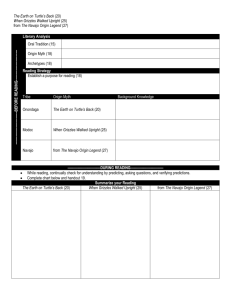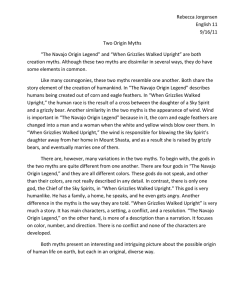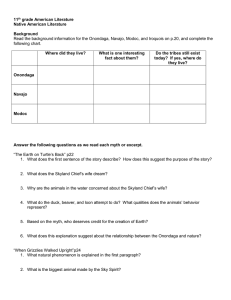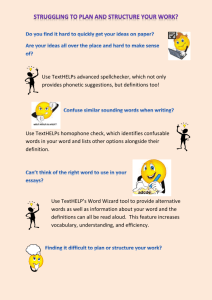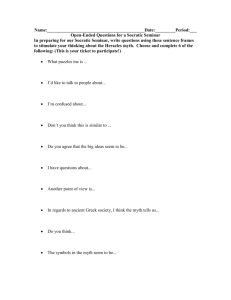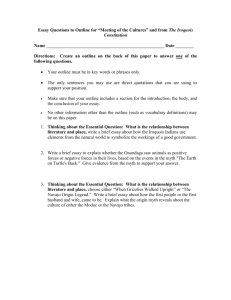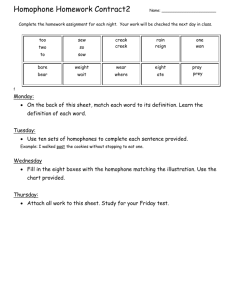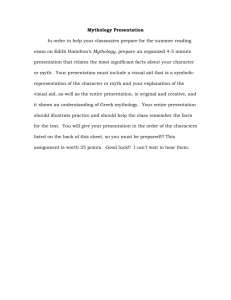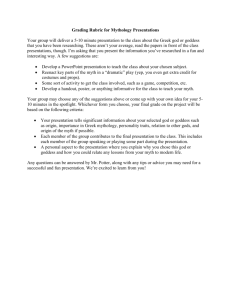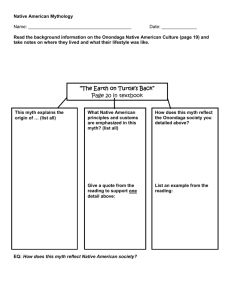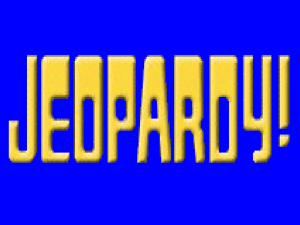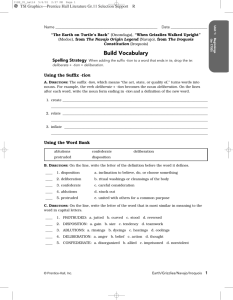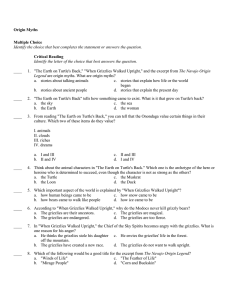When Grizzlies Walked Upright & The Navajo Origin Legend Lesson
advertisement
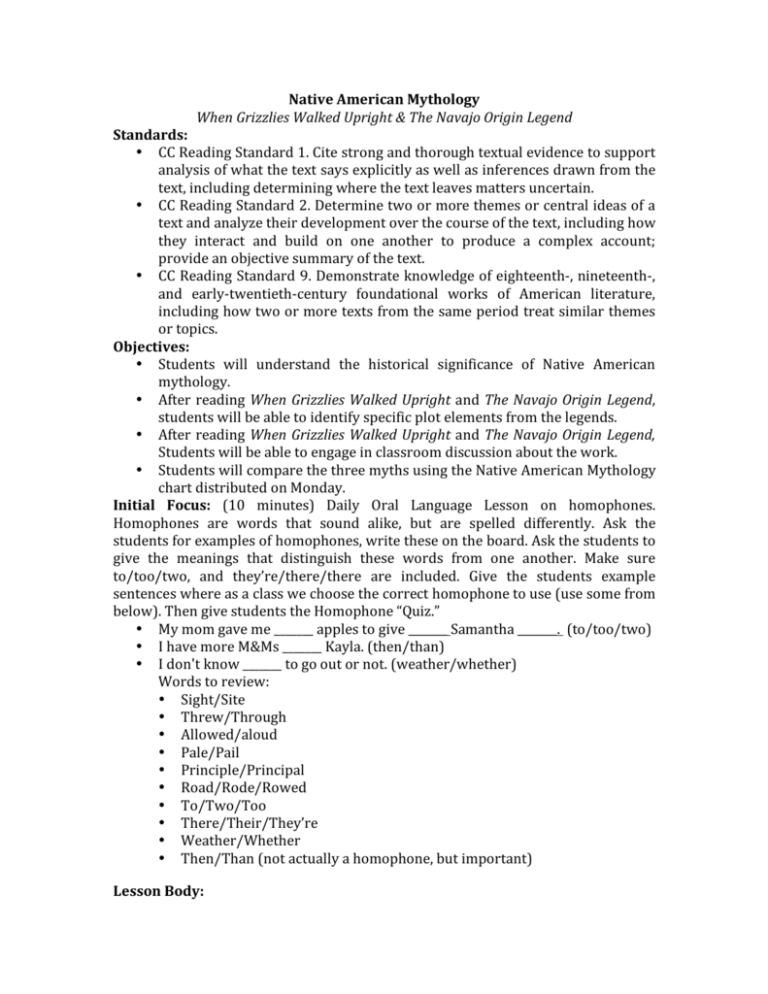
Native American Mythology When Grizzlies Walked Upright & The Navajo Origin Legend Standards: • CC Reading Standard 1. Cite strong and thorough textual evidence to support analysis of what the text says explicitly as well as inferences drawn from the text, including determining where the text leaves matters uncertain. • CC Reading Standard 2. Determine two or more themes or central ideas of a text and analyze their development over the course of the text, including how they interact and build on one another to produce a complex account; provide an objective summary of the text. • CC Reading Standard 9. Demonstrate knowledge of eighteenth‐, nineteenth‐, and early‐twentieth‐century foundational works of American literature, including how two or more texts from the same period treat similar themes or topics. Objectives: • Students will understand the historical significance of Native American mythology. • After reading When Grizzlies Walked Upright and The Navajo Origin Legend, students will be able to identify specific plot elements from the legends. • After reading When Grizzlies Walked Upright and The Navajo Origin Legend, Students will be able to engage in classroom discussion about the work. • Students will compare the three myths using the Native American Mythology chart distributed on Monday. Initial Focus: (10 minutes) Daily Oral Language Lesson on homophones. Homophones are words that sound alike, but are spelled differently. Ask the students for examples of homophones, write these on the board. Ask the students to give the meanings that distinguish these words from one another. Make sure to/too/two, and they’re/there/there are included. Give the students example sentences where as a class we choose the correct homophone to use (use some from below). Then give students the Homophone “Quiz.” • My mom gave me _______ apples to give _______ Samantha _______. (to/too/two) • I have more M&Ms _______ Kayla. (then/than) • I don't know _______ to go out or not. (weather/whether) Words to review: • Sight/Site • Threw/Through • Allowed/aloud • Pale/Pail • Principle/Principal • Road/Rode/Rowed • To/Two/Too • There/Their/They’re • Weather/Whether • Then/Than (not actually a homophone, but important) Lesson Body: Introduction: (3 minutes) Ask the students if any of them need clarifications about their BHS Myth assignment, remind them that the assignment is due at the beginning of the class period on Friday, September 16 (tomorrow)! Introduce the two myths to the students (On Monday, we read a myth from the Onondaga tribe, today we will read creation myths from the Modoc tribe and the Navajo tribe) Main Focus: (22 minutes) Are there any volunteers to read the myth When Grizzlies Walked Upright aloud? (If there are no volunteers, the instructor will read). After reading the story, ask the students to summarize the events of the story. How does this myth compare to The Earth on Turtle’s Back? Ask the students for volunteers to read The Navajo Origin Legend. (If there are no volunteers, the instructor will read). After reading the story, ask the students to summarize the events of the story. How does this myth compare to The Earth on Turtle’s Back and When Grizzlies Walked Upright? Closing: (15 minutes) The Native American Mythology graphic organizer will be due tomorrow, at the beginning of class along with the BHS Myth. Allow the students to use the rest of the class time to quietly complete their graphic organizer, they may work in pairs or on their own. As the bell rings, remind the students one final time about the assignments due tomorrow. (If the students are working hard and have not finished their graphic organizer, they will be allowed to finish it quickly in class on Friday because they cannot take their Literature books home with them). Resources/Materials: • 1 Textbook for each student • 50 Homophone “Quizzes” • Writing utensils (student provided) Evaluation Procedures: Students will receive 20 points for the accurate and timely completion of their graphic organizers. The homophone quiz will be collected for instructor data, but will not be given a score in the grade book. Diversity Strategies: Students who have an IEP will be given all necessary provisions included in their IEP. The ELL student will have access to his/her ELL para‐professional at all times and will use the services available to her at her discretion. Self­Evaluation/Reflection: • How was the lesson timing? Did the lesson elements take more or less time than I expected? • Were the students willing to read aloud? • Was reading aloud as a class a successful strategy for the students to receive the information in a timely manner, or should I have implemented other reading strategies? • Was I able to keep the students engaged in the story? • What would you do differently the next time you teach this lesson?
